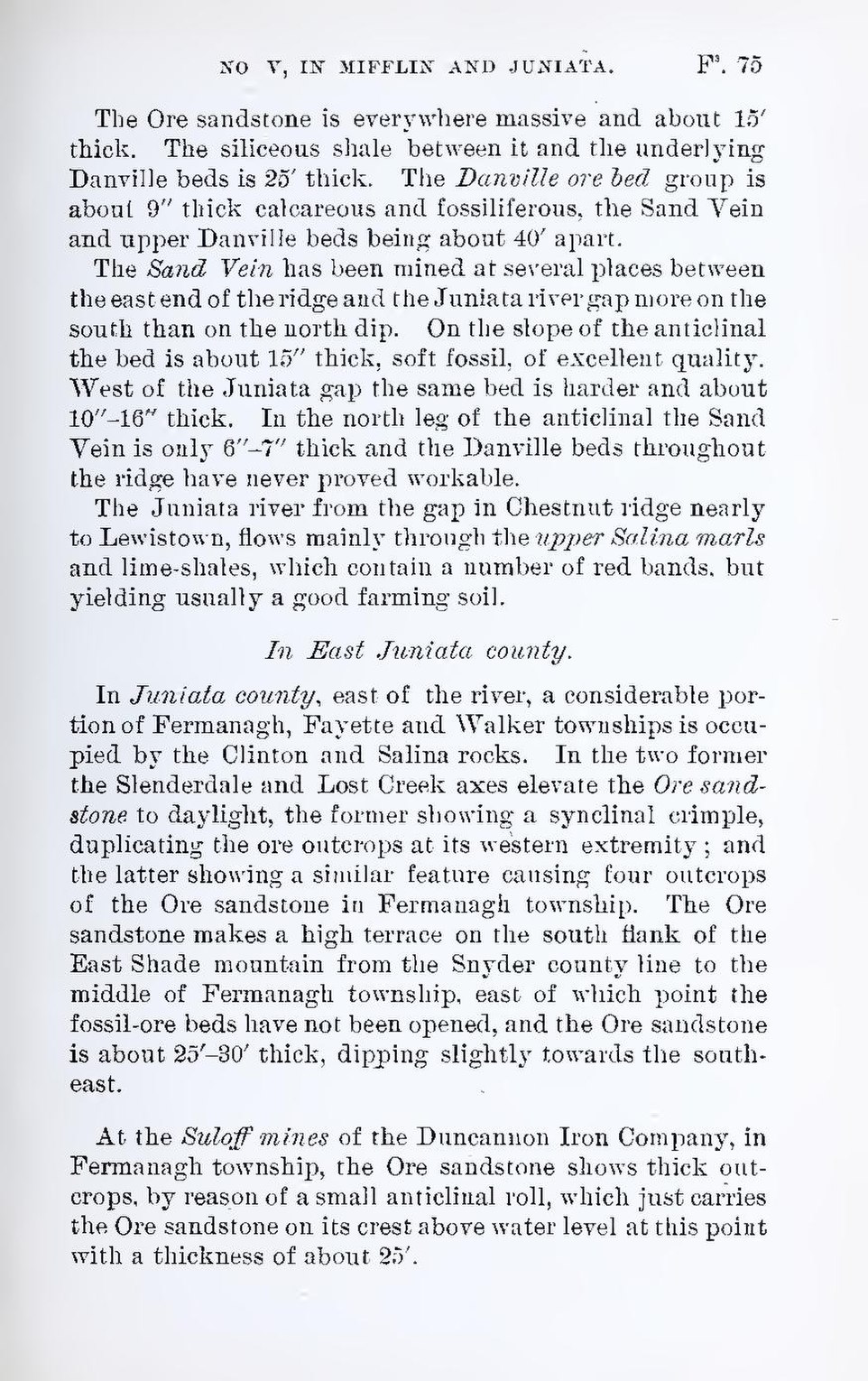The Ore sandstone is everywhere massive and about 15′ thick. The siliceous shale between it and the underlying Danville beds is 25' thick. The Danville ore bed group is about 9″ thick calcareous and fossiliferous, the Sand Vein and upper Danville beds being about 40′ apart.
The Sand Vein has been mined at several places between the east end of the ridge and the Juniata river gap more on the south than on the north dip. On the slope of the anticlinal the bed is about 15″ thick, soft fossil, of excellent quality. West of the Juniata gap the same bed is harder and about 10″-16″ thick. In the north leg of the anticlinal the Sand Vein is only 6″-7″ thick and the Danville beds throughout the ridge have never proved workable.
The Juniata river from the gap in Chestnut ridge nearly to Lewistown, flows mainly through the upper Salina marls and lime-shales, which contain a number of red bands, but yielding usually a good farming soil.
In East Juniata county.
In Juniata county, east of the river, a considerable portion of Fermanagh, Fayette and Walker townships is occupied by the Clinton and Salina rocks. In the two former the Slenderdale and Lost Creek axes elevate the Ore sandstone to daylight, the former showing a synclinal crimple, duplicating the ore outcrops at its western extremity; and the latter showing a similar feature causing four outcrops of the Ore sandstone in Fermanagh township. The Ore sandstone makes a high terrace on the south flank of the East Shade mountain from the Snyder county line to the middle of Fermanagh township, east of which point the fossil-ore beds have not been opened, and the Ore sandstone is about 25′-30′ thick, dipping slightly towards the southeast.
At the Suloff mines of the Duncannon Iron Company, in
Fermanagh township, the Ore sandstone shows thick out-
crops, by reason of a small anticlinal roll, which just carries
the Ore sandstone on its crest above water level at this point
with a thickness of about 25′.
